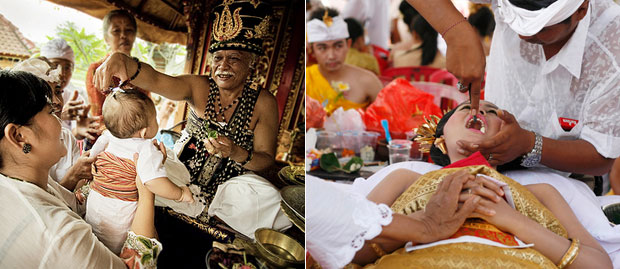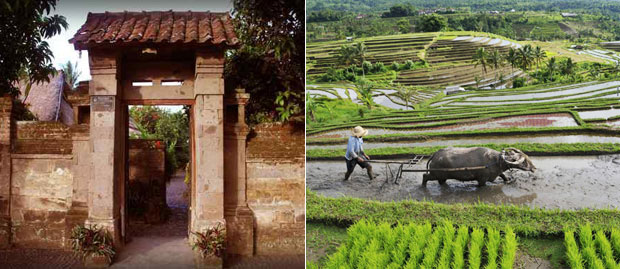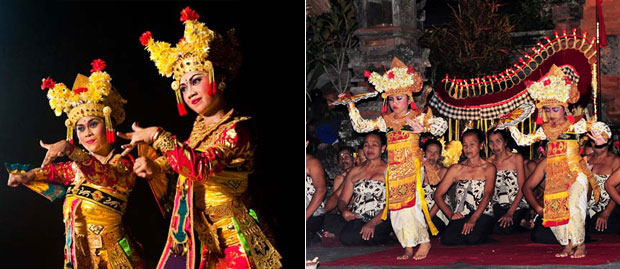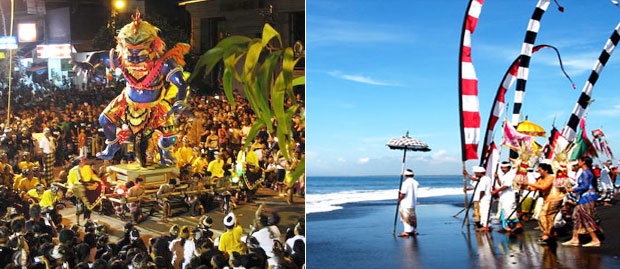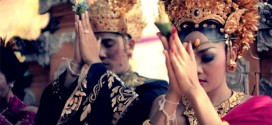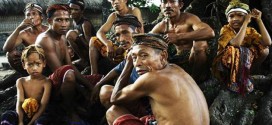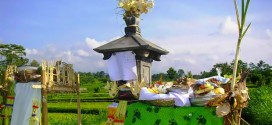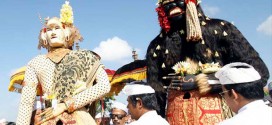Balinese life is really amazing. it won’t say that it is an easy life per se, what with the countless ceremonies that Balinese have, and it would take a lifetime to tell you all about what the people do here in Bali. But to give you a glimpse into Balinese lives and the meaning behind some of our beliefs and traditions, here are some interesting facts for you!
DID YOU KNOW?
- The Balinese believe that every child born into this world is accompanied by four guardian angels called catur sanak. These four angels are said to stay beside the child until he or she turns four years old.
- The Balinese celebrate their Balinese birthday twice a year based on astrological calculations repeated every six months. So basically, there are three celebrations for a Balinese each year: their birthday (based on their birth date) and two Balinese birthdays (otonan).
- Every Balinese must undertake a tooth filling ceremony to welcome adulthood. It is believed that the ceremony helps one to become stronger both physically and mentally, and it is crucial for mitigating one’s “evil side” – desire (kama), greed (lobha), anger (krodha), intoxication or being under the influence of strong emotion (mada), confusion (moha) and jealousy (matsarya)
- The Balinese have their own version of feng shui called asta kosala kosali. The minimum area of land necessary to apply the asta kosala kosali architectural rules to a house is 200 square meters
- In the past it was taboo for a Balinese to have a door at the entrance gate of their house. The idea of having a “bare entrance gate” stemmed from the culture of welcoming everyone into their home.
- The Balinese are known for their advanced irrigation system called subak, which is a reflection of the tri hita karana philosophy of maintaining a harmonious relationship with God, other people and nature. On June 29, 2012, the subak system was awarded World Heritage Cultural Landscape status by UNESCO
- The “Legong Dance of the Virgins” was one of the first international movies that captured the beauty of the island of Bali The film opened in New York on October 1, 1935
- In general there are three types of traditional Balinese dances.Wali dances are sacred dances that can only be performed during a Balinese traditional ceremony because the dance is part of the ceremony itself (one example is the Sanghyang Dedari dance). Babali dances are also performed during a ceremony, but the purpose is more to entertain the people involved in the ceremony (one example is Gambuh, or traditional Balinese opera). Balih- balihan dances can be performed anytime and anywhere, because the purpose is purely to entertain (an example of this is the Joged dance).
- The Sanghyang Dedari dance can only be performed by young virgins. It is believed that the girls who perform it are in a trance throughout the dance
- Nyepi, or Silent Day, is a Balinese New Year celebration. The day is spent praying and meditating at home with four rules to obey: no light or fire ( amati geni ), no working ( amati karya ), no traveling (amati lelunganan) and no food for 24 hours (amati lelanguan)
- In the past, the Balinese celebrated Nyepi with a total blackout throughout the island, but nowadays due to safety reasons and other considerations, certain public places such as hospitals, police stations and hotels are allowed to use electricity and light as long as it can’t be seen from outside the building.
- The Balinese believe that the colors red, white and black symbolize the holy spirit of God and also represent the idea of our presence in this world. Red represents creation, black represents preservation, and white represents balance. The combination of these colors is called tri datu
- There are nine temples that guard the island based on the points of a compass. Those temples are: Batur Temple (North), Besakih Temple (Northeast), Lempuyang Temple (East), Andakasa Temple (Southeast), Gua Lawah Temple (South), Uluwatu Temple (Southwest), Batukaru Temple (West) and Pucak Mangu Temple (Northwest). Representing the center is the Pusering Jagat Temple.
There are many other interesting things that you can only find in Bali, and the way for you to learn more is by spending time exploring the island. Don’t hesitate to ask the locals about their lives. Have a wonderful holiday!
source: bali and beyond

